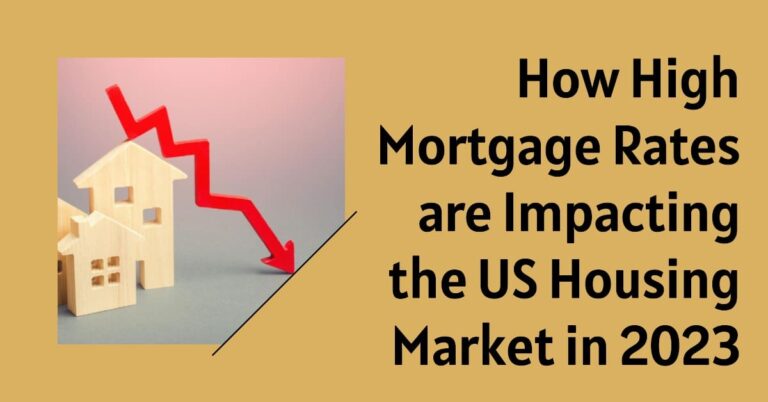The housing market in 2023 is facing a perfect storm of challenges that is sending shockwaves throughout the industry. Housing prices have been soaring, supply is painfully tight, and to add to the chaos, the 30-year fixed mortgage rate has surged to a staggering 8%. According to a report by CNBC, this rate is the highest in decades, and it’s causing distress among both buyers and sellers.
During the first two years of the pandemic, the Federal Reserve kept its benchmark rate at zero and poured money into mortgage-backed securities. This resulted in record-low mortgage rates for a sustained period, driving a buying frenzy and causing home prices to skyrocket by 40% from pre-pandemic levels. However, as inflation surged, the Fed raised interest rates, making the housing market even more expensive.
What makes the current situation unique is the severe lack of supply. Homebuilders, still recovering from the Great Recession of 2008, have struggled to meet the demand, and this imbalance in supply and demand is exacerbating the challenges posed by high mortgage rates.
Who’s Suffering in this Housing Market?
Would-be sellers are caught in a dilemma. They are hesitant to give up their existing 3% mortgage rates for new purchases at the 8% rate, leading to a standstill in the housing market. Matthew Graham, the Chief Operating Officer at Mortgage News Daily, described the situation as “worse than the great financial crisis in terms of volume and activity.”
Sales of previously owned homes in September dropped to the slowest pace since October 2010, as reported by the National Association of Realtors. This downturn is unprecedented in recent history. Unlike the foreclosure crisis era, today’s housing market is marked by extremely low foreclosures and high home equity among existing homeowners. Additionally, many homeowners refinanced at record-low interest rates between 2020 and 2022, making their housing costs relatively affordable.
Potential buyers are equally affected. Anxious about the market’s uncertainty, many are adopting a wait-and-see approach, further contributing to the market’s stagnation.
Projections for Housing Prices
While the current situation is bleak, there is some hope for specific markets with faster job growth and affordable prices. Markets in Florida, such as Tampa, Jacksonville, and Orlando, as well as Houston, Texas, and Memphis, Tennessee, may experience an upswing in sales. Notably, large production builders like Lennar and D.R. Horton are helping buyers by offering below-market-rate loans, a practice not commonly seen in previous housing cycles.
The Housing Supply Challenge
Although construction of single-family homes is slowly increasing, it still lags far behind demand. The builder sentiment has taken a hit due to higher rates, but the new home market remains more active than the market for existing homes.
In some good news for renters, apartment rents are cooling off due to a surge in new supply. This gives renters less incentive to jump into buying, although demand for rentals is on the rise.
The Conundrum for Home Buyers
For those looking to upgrade to a larger home or downsize to a smaller one, the situation is challenging. Prices continue to rise due to the supply and demand imbalance, but sellers are becoming more flexible. Buyers face a decision: purchase now at higher rates and hope for a price reduction or wait for rates to drop, potentially leading to bidding wars in the future.
In summary, the 2023 housing market is a battleground of high mortgage rates, limited supply, and hesitant buyers and sellers. While some markets show promise, the overall picture is one of uncertainty and anxiety. The housing market is experiencing an unprecedented set of challenges that will likely shape its future in ways we can’t yet predict.





